This winter driving guide includes:
- How to respond during an emergency.
- Driving tips that will help keep you and your family safe.
- A comprehensive checklist for getting your vehicle “winterized.”
- Seven simple DIY maintenance items to watch during the winter.
- What to place in your emergency kit, including something we all overlook.
- How states are implementing new technology to help keep you safe when you travel.
Winter Driving 101: The Complete Guide To Staying Safe & Ready
Driving during the winter is a challenge. How your car behaves on dry pavement is different than snowy or icy roads. And just like us, our cars can get grumpy when it’s freezing outside. But instead of being a winter worrier, let us help you become a winter warrior with our winter driving guide.
With this guide, you can better prepare your vehicle (and yourself) to tackle snow and ice more confidently. One thing that may come as a surprise is the actual number of accidents during the snowy season. Contrary to popular belief, there are not more crashes during the winter months.
“But those we see tend to be more serious,” explained Maureen Vogel, Spokeswoman for the National Safety Council. “Often, drivers do not realize how much they need to slow down when the weather is bad. Many tend to drive too fast for the conditions, which can lead to unnecessary crashes.”
However, driving at a slower speed is not the only factor to consider when it’s snowing. This winter driving guide will give you an in-depth look on how to properly prepare for snowy weather.
Vehicle Safety Checklist: 4 Essential Points
Let’s start this winter driving guide by examining the condition of your vehicle. It’s best to do this before the snow falls, or before taking any long journey this winter.
#1. When Was Your Last Service
Breaking down is bad enough but getting stranded in the winter cold is another thing. Start by visiting your local mechanic or dealership for an inspection and any routine maintenance items you may have overlooked. This includes changing the oil and other fluids, repairing leaks, drive belts, or replacing worn out parts.
When it comes to replacing parts, always prioritize safety items first. Brakes, tires, wheel bearings, and other suspension components can have a direct impact on safety if left unchecked. When in doubt, ask your mechanic to explain how the part that needs to be replaced functions, and if it impacts your safety.
#2. Check For Existing Safety Recalls
With safety in mind, the next thing you want to do is check your vehicle for outstanding safety recalls. If it’s something serious, the problem might be more dangerous during freezing weather. In order to check if your vehicle is affected, go to the NHTSA Safety Issues & Recalls page.
Using the site is relatively easy. Enter the VIN number or the make and model of your car and go from there.
#3. Buy Your Vehicle Some New Shoes
Your tires are the only things keeping you in contact with the road, and they’re even more important during slippery conditions. It’s crucial to make sure they’re up to the task. Tread depths and designs are primarily engineered to generate traction on wet or snow-covered pavement. The more “depth” your tires have, the better the traction. As a general rule of thumb, make sure to replace your tires when the tread depth drops to 4/32”.
But what about snow tires? Are all-season tires good enough to handle winter driving? Not necessarily.
“If temperatures are generally above 15°F and there is only light to moderate snowfall, all-season tires may be adequate,” said Michael Calkins, Manager of Technical Services at the American Automobile Association or AAA. “However, if you live where temperatures are frequently below 15°F and there are regular storms that deliver several inches of snow, then snow tires will provide definite traction, handling, and safety benefits.”
Snow tires are manufactured using softer compounds that provide adequate grip in freezing temperatures. Snow tires also have aggressive tread designs with various biting edges or sipes to offer better traction. In some cases, snow tires will come with metal studs for increased traction over and through deep snow.
“If your car slips and slides on snowy or icy pavement, it is hard to accelerate and brake without spinning or locking the wheels,” Calkins said. “Or if the car doesn’t want to track smoothly through corners without losing traction at the front or rear, snow tires will be of huge benefit in this regard.”
#4. Got Air? Check Tire Pressures
Did you know tire pressures drop an average of two PSI for every 10-degree drop in ambient temperature? This means the amount of air inside the tires is just as important as the tires themselves.
However, dropping the tire pressure is not necessarily a bad thing when tackling icy roads. Having the tires a bit underinflated in low-traction conditions will actually help generate more traction. But how low can you go? Check the owner’s manual for the recommended range of tire inflation pressures. Vehicles today also have the recommended tire pressures printed in a chart-like box inside the driver’s side door jamb.
We highly advise you to check the tire pressure before traveling and during every fuel stop if you deem it necessary. With that in mind, always keep a tire pressure gauge handy. Most cars today are also equipped with a Tire Pressure Monitoring System, or TPMS for short. If a tire drops too low, you will receive a warning light on your dashboard.
7 Simple DIY Maintenance Items For Winter Driving
Even if your car and the tires are in relatively good shape, there are still a couple of DIY maintenance items to check. We’ve included these in our winter driving guide because they are easily overlooked.
#1. Check The Battery
Batteries lose their charge faster when they’re cold, making it harder to crank the motor during the winter season. If you see cracks or damage on the battery casing, replace it immediately. You can also use a multi-meter to check the voltage of the battery. If the reading falls below 12.40 volts to 12.75 volts, it may be time for a new battery.
And while you’re at it, make sure the battery cables are tight to ensure a perfect start the first time around.
#2. Check The Coolant Reservoir
The name “coolant” is a bit misleading. In truth, coolant primarily lubricates all the metal and aluminum parts in the cooling system. This includes the radiator, water pump, and other critical internal parts. Coolant or antifreeze will also prevent the liquid from hardening or freezing inside the cooling system. If the temperature is forecasted to fall below freezing, consider flushing the cooling system and refilling the radiator with a 100 percent concentration of antifreeze.
As for how often you should do this, it’s best to consult either your local mechanic and/or the owner’s manual. The schools of thought on this vary greatly but it’s an important maintenance item nonetheless.
#3. Wiper Blades Are Important
As a general maintenance rule, you don’t need to wait for the windshield to get streaky before replacing the wiper blades. This is a low-cost solution that will help you see easier in adverse weather.
#4. So Is The Washer Fluid
You will end up using a lot of windshield wiper fluid during the winter. Make sure to fill up the reservoir with winter-formulated fluid before setting off. It is a good idea to check the reservoir every time you stop for gas. Keep a reserve jug of fluid (or two) in your trunk.
#5. Check All Exterior Lights
This includes the headlights, taillights, signal markers, and hazard lights. If one or more of the bulbs are defective, replace them before driving off.
#6. Fill Up Often
We generally recommend keeping your gas tank at least a third full when driving in the winter. If the weather is really bad, the tank should be at least half full. If you find yourself stranded, a full tank means the engine can run and you can stay warm. Of course, this is also insurance against running out of gas on an icy and frozen road.
#7. Change The Floor Mats
Rubberized floor mats are ideal for winter driving. They can trap dirt, snow, and slush without staining or wetting the carpets underneath. Rubber floor mats are also much easier to clean. However, only buy the correct shape and size mats for your vehicle, and make sure to install them correctly. Improper installation will interfere with the gas and brake pedal as you drive.
Prepare An Emergency Kit & Get An Atlas
In a recent study conducted by Siegfried & Jensen, 62 percent said they feel prepared in the event of a breakdown. However, that same study found people carry just four of the eight emergency items recommended by DMV.org.
“This research goes to show how gravely underprepared drivers are for accidents on the road,” said Ned Siegfried, President of Siegfried & Jensen. “This misplaced confidence suggests there isn’t enough being done to educate drivers about how to get their vehicles ready.”
Siegfried & Jensen also found that less than a quarter of Americans keep paper maps in the glovebox, and only 11 percent have a sat nav, suggesting drivers rely overwhelmingly on smartphones for directions. But as signals can disappear in remote areas and batteries can die after several hours in the cold, having a traditional road atlas handy like our grandparents always did is good advice for the winter months.
“Although getting lost without access to a map or being stuck on the side of the road for a couple of hours can be a minor annoyance, it’s crucial to prepare for more serious accidents for the safety of all road users,” Siegfried said.
As for your emergency kit, it should include: a flashlight, jumper cables, salt or kitty litter, a small shovel, scraper, flares or glow sticks, matches or pocket lighter, candles, food and water, medication, an extra set of clothing, spare blankets, and an extra cell phone. Include anything else you think will best serve you in the event you are stranded.
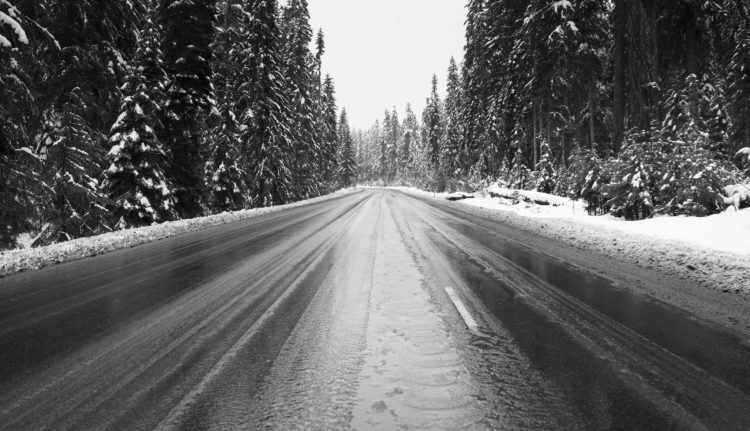
Less than a quarter of Americans keep paper maps in the glovebox. In remote areas, this could be problematic as smartphones can lose signal.
Driving In Snow & Ice: 5 Critical Things To Consider
Now that your vehicle is in tip-top shape and your emergency kit and atlas are packed, here are five tips to help you safely arrive at your destination.
#1. Obey The Speed Limit
We cannot stress this enough. Driving at high speeds, especially on slippery roads is dangerous.
“The majority of traffic crashes in the winter can be attributed to driving too fast for the conditions of the roadway,” said Jim Flegel, Special First Lieutenant, Michigan State Police. “Drivers must obey the basic speed laws and must operate their vehicle at a careful and prudent speed taking into account the road and weather conditions at all times.”
And always keep a safe distance from the other vehicle in front of you.
“By adhering to the basic speed law, the driver will be able to properly maintain control of their vehicle and will be able to stop within the assured clear distance ahead,” Flegel added. “The only compensation that will work when driving on slippery roads, is to slow down and increase your following distance.”
#2. Avoid Distracted Driving
Driving over slippery or icy surfaces is bad enough, and doing it while distracted will severely increase your chances of an accident. Make no mistake about it. Distracted driving kills and it’s a worldwide problem. Never text, call, or operate a smartphone or mobile device as you drive. Even just a half-second of distraction can mean the difference between life and death.
#3. Always Drive Sober
Alcohol and other drugs will significantly impair your motor skills, reaction time, and judgement. Your brain needs these things in order to get you home safe during the cold winter months. Know your limit and always designate a sober driver before heading out.
#4. Electronic Traction Control
Keep the stability and traction control (ESC and ETC) on at all times. These safety features will assist you if you find yourself skidding, sliding, or spinning.
#5. Plan Ahead
Even if the weather conditions are generally calm from where you are, it might not be the same upon reaching your destination. In Michigan, travelers can see the location of plow trucks in real-time across the state. The trucks even have on-board cameras so you can see what the plow operator sees.
Pennsylvania’s Where’s My Plow? and North Dakota’s Track-A-Plow are similar programs. North Dakota Department of Transportation Director Tom Sorel believes we should use the advancements in technology to our advantage.
“This is one more piece of information that travelers can use to see what is happening on the highways and make more informed decisions when making travel plans,” he said.
Check your home state’s department of transportation website to see if a similar program exists in your area.
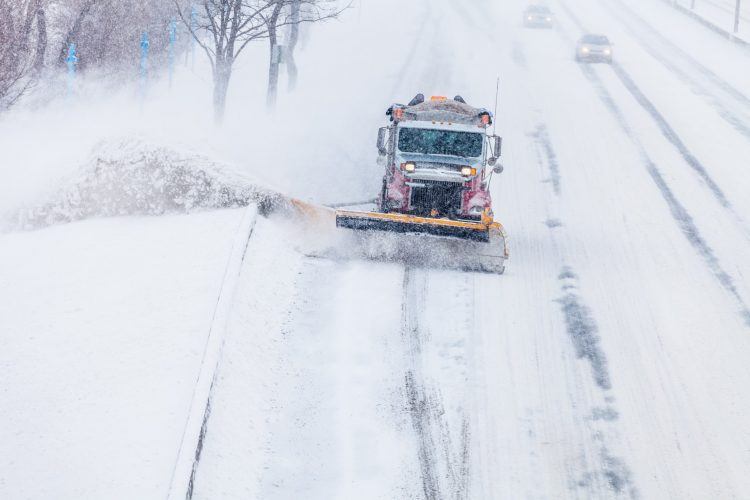
States like Michigan, North Dakota, Pennsylvania, and Virginia offer residents a free plow tracking service through their respective transportation departments. The programs can help residents better prepare for winter driving.
What To Do During An Emergency
If something bad happens, do NOT panic. Check if you or your passengers are injured, then follow the Steer It, Clear It rule.
“If you are not injured and the vehicle is drivable, immediately move the vehicle from the traveled portion of the roadway to the shoulder or other safe location,” Flegel said.
The next thing is to call 911 or roadside assistance.
“Take good note of your location, including the mile marker if you’re on the highway, to ensure they can easily find you,” Vogel advised.
Here are other important things to remember if you end up in the middle of the road after an accident:
- Stay inside the vehicle with your seat belt securely fastened.
- Activate your four-way emergency flashers to warn other drivers.
- If you must leave your vehicle, be extremely aware of passing traffic.
- Walk directly to a safe location away from the traveled portion of the roadway.
- Call 911 and report the crash, giving the dispatcher specific details about the location.
Putting It All Together
Colder months can be safer and easier if you follow the advice in this winter driving guide. You may never predict what another driver will do at any given moment; you may not be able to predict the weather, but it helps to remain alert so you can anticipate any curve balls along the way.
“Be a good defensive driver so you can continuously scan for other motorists losing control and crossing the centerline,” Flegel concluded. “Check the weather report, leave early if necessary, and let others know your route and anticipated arrival time.”
“Winter presents all kinds of challenges. As a general rule, stay inside if it’s bad outside,” Vogel added. “Our roads are risky even when conditions are clear – add inclement weather to the mix and you increase your risk of a crash.”
Additional Resources
NHTSA: Tips for Traveling Safely.
AAA Exchange: Winter Driving Tips.
OHSA: Prepare, Protect, Prevent: Safe Winter Driving.
Michigan.gov/FEMA: How To Prepare For a Winter Storm (PDF Packet).
https://www.automoblog.net/2019/01/03/winter-driving-101-the-complete-guide/
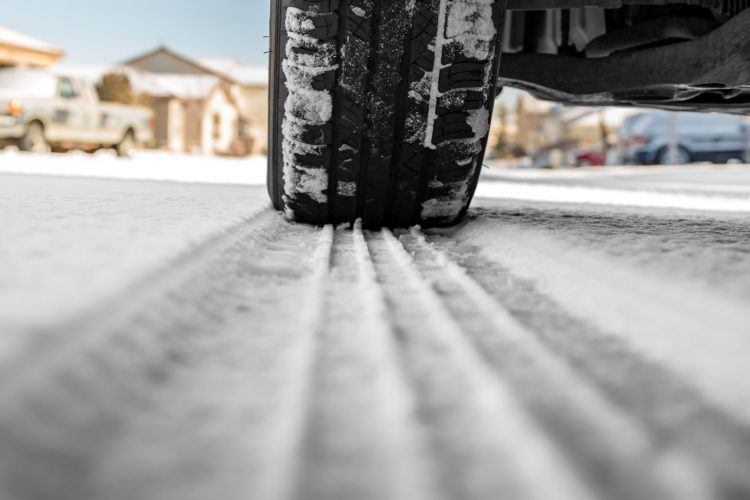
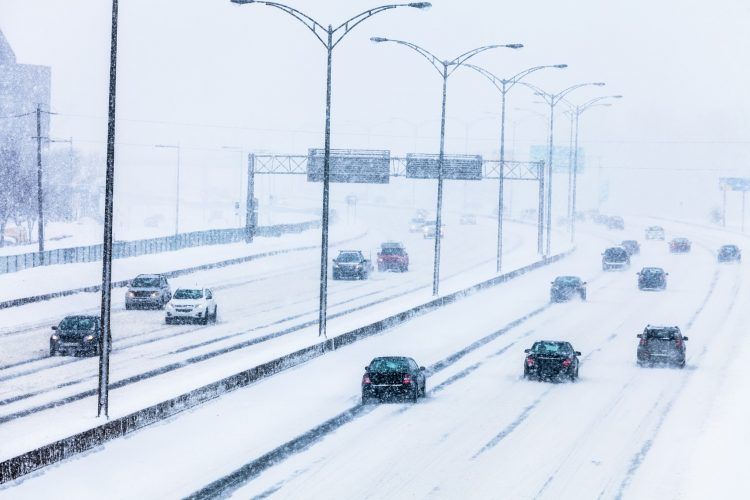
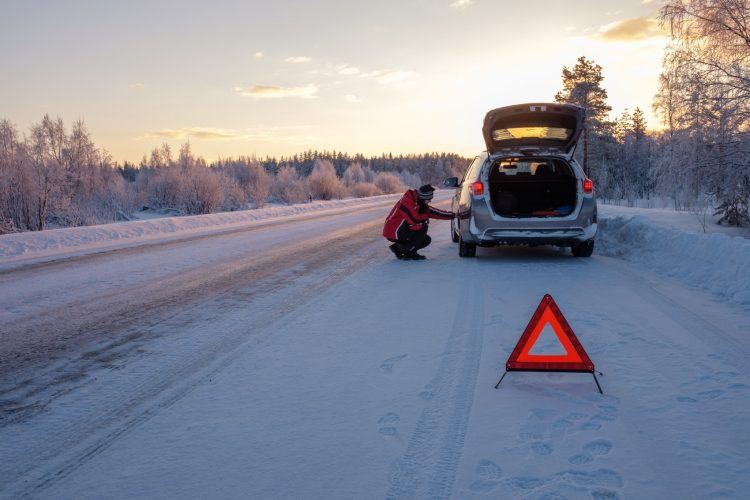
No comments:
Post a Comment